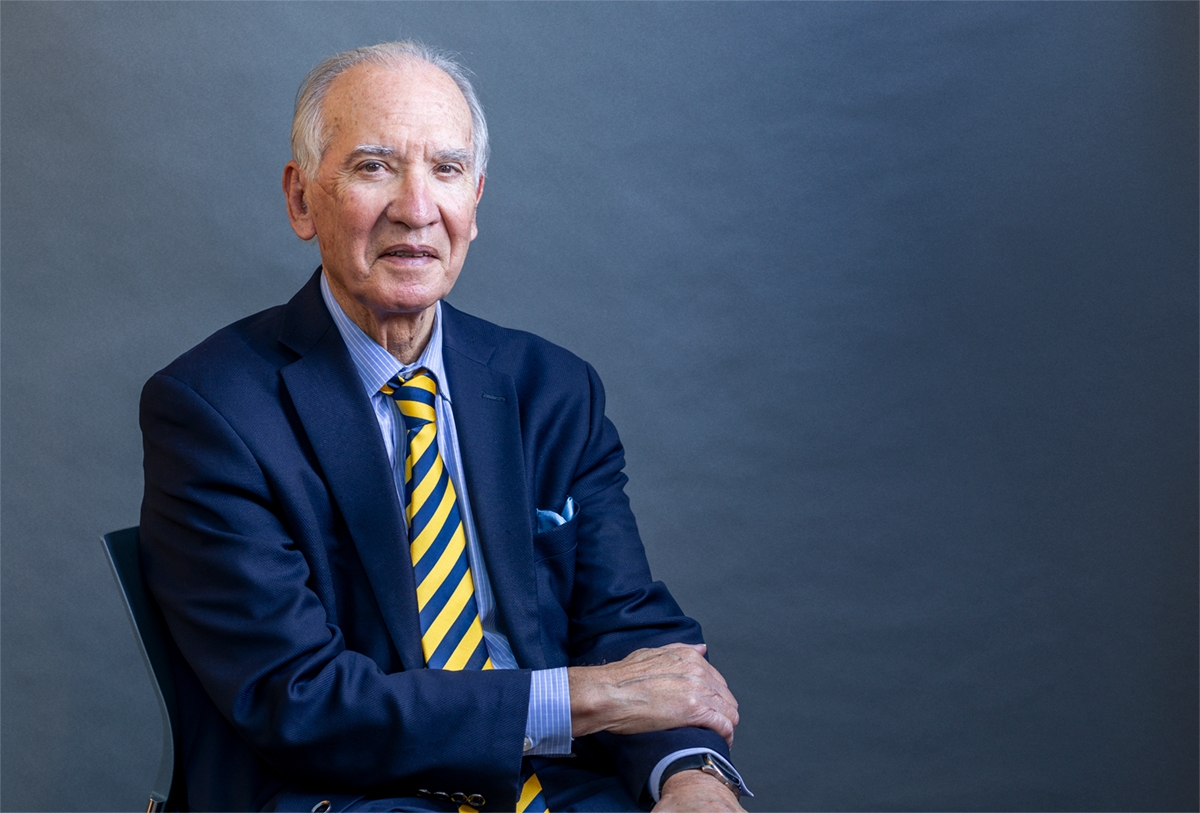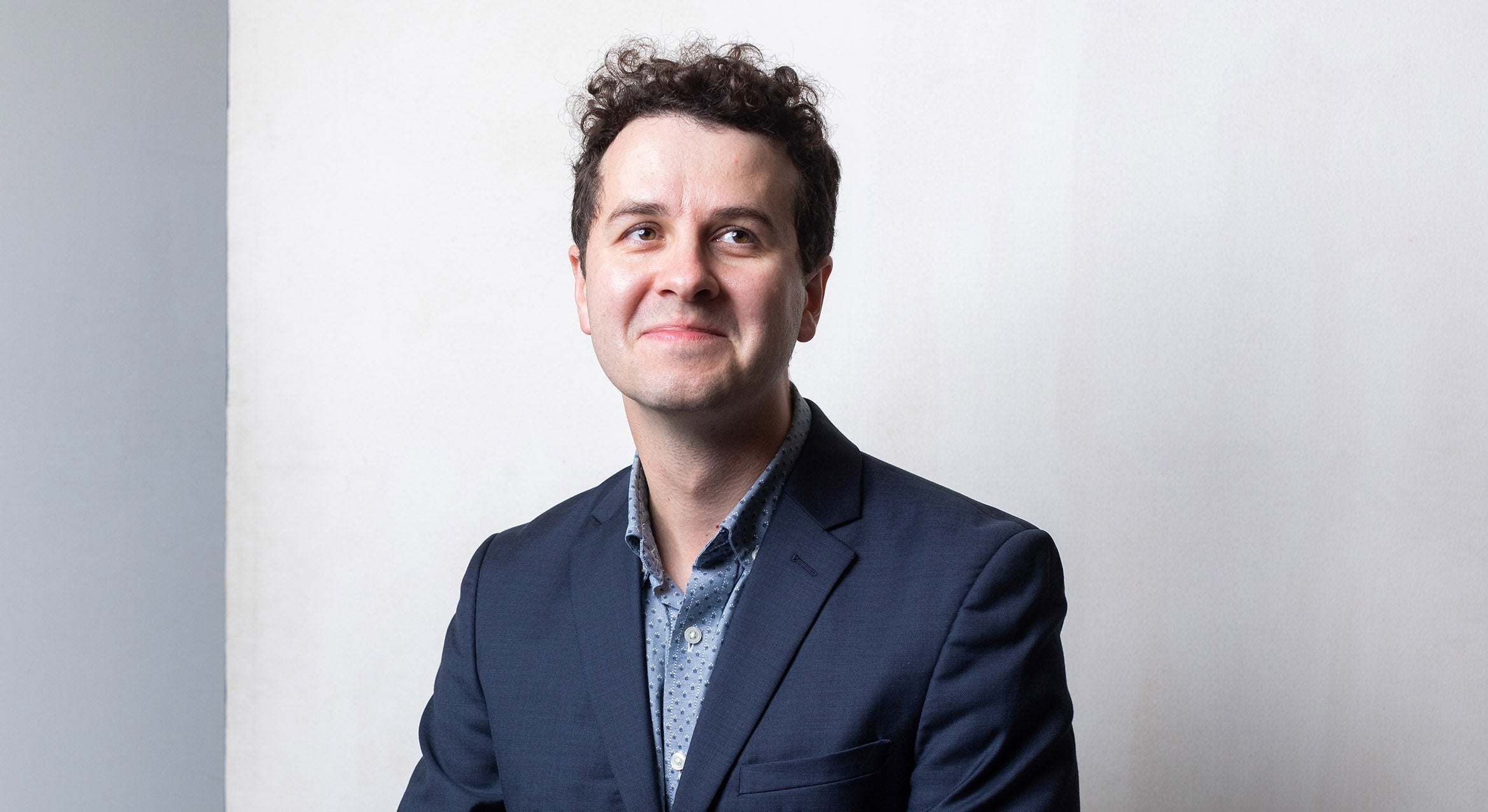
Mario T. García, a UC Santa Barbara professor for 47 years, to be honored at Sal Castro Memorial Conference
Among the first generation of professionally trained historians to excavate and record Chicano and Chicana history, UC Santa Barbara professor Mario T. García helped set the foundation for emerging scholars during the past half century.
His body of work as a self-described liberationist historian aiming to inspire progressive social change includes more than a dozen books and several edited collections, all of which advance the inclusion of the poor and oppressed, and spotlight the leaders of social justice movements.
García’s legacy will be the focus of a special symposium as part of the sixth bi-annual Sal Castro Memorial Conference, Feb. 17–18, in the McCune Conference Room of the campus’s Humanities & Social Sciences Building. Named after Salvador “Sal” Castro, a high school social studies teacher who helped lead the historic 1968 Chicano student walkouts to protest bias and inequalities in the Los Angeles Unified School District, the conference is free and open to the public.
Guest speakers will cover recent books about the Chicano movement, plus history, art and culture. The symposium on García’s work will include a keynote video presentation about his life and career, a panel discussion on civil rights leadership and reflections on his work’s impact on graduate students and fellow academics.
“Having used several of professor García’s books in my own courses over the past 24 years, I can speak to the powerful impact that they have had on students,” said Alicia Rodriquez, who will speak at the symposium. Rodriquez is a history professor at California State University, Bakersfield, a designated Hispanic-Serving Institution where more than 60% of the student body is Latina/o.
“For these students,” she said, “being exposed to a past that they did not know existed, or maybe knew existed but never had the opportunity to study in-depth, his work has been especially important. Anyone who reads García’s scholarship will come away not only with an awareness of past wrongs, but also inspired at what can be achieved when these wrongs are confronted.”
For more about his academic background and the themes of his work, The Current caught up with García ahead of the conference.
The Current: What does it mean to be a liberationist historian?
Mario García: By liberationist historian I mean that my work prioritizes the history of the poor and oppressed and of those key leaders who have worked to bring about social justice for oppressed people — in this case for Chicanos and other Latinos. I am influenced by liberation theology promoted by progressive Catholic clergy who call for the church to prioritize the plight of the poor and oppressed. I am not a liberationist priest but a liberationist historian.
Were you among the earliest historians in this particular field?
When I started teaching and researching, I was one of just a handful of Chicano historians in the 1970s. This first-generation cohort of professionally trained Chicano historians with Ph.D.s included Alberto Camarillo, Antonia Castaneda, Deena Gonzalez, Richard Griswold del Castillo, Ricardo Romo and a few others.
Whose work influenced you initially?
First and foremost, we discovered the work of Carey McWilliams, who in 1949 produced the first history of Mexican Americans. This was foundational to give us a sense and chronology of that history. I could not have taught my first Chicano history course in the fall of 1969 without his seminal book, “North From Mexico: The Spanish-Speaking People of the United States.”
I was also influenced by the work of University of Texas professor George I. Sánchez and his 1940 classic “Forgotten People: A Study of New Mexicans.” The book suggested that one key reason why Mexican Americans trailed other American ethnic groups in economic and educational achievements had to do with their origins as a people conquered by the U.S. during the Mexican-American War (1846–48). That conflict resulted in the U.S. taking all of Mexico's northern frontier, from Texas to California. The conquered Mexicans in this territory became the “forgotten people.”
Another early scholar who was influential was Ernesto Galarza. Beginning in the 1940s, he wrote a number of exposés of the plight and oppression of Mexican farmworkers, including those in the Bracero Program, which from 1942-–1964 transported thousands of Mexican contract workers to the U.S. where they were heavily exploited. Galarza’s 1964 book “Merchants of Labor: The Mexican Bracero Story” is a classic.
These three were precursors to my generation of Chicano historians, and we acknowledged them as such.
Talk about your first major project.
My first experience with writing Chicano history was a dissertation for my Ph.D. in history at UC San Diego. I chose to write a history of the first large wave of Mexican immigrants to the U.S. in the late 19th and early 20th centuries, using the border city of El Paso — my hometown — as a case study. However, one of my professors at the University of Texas — where I had completed my bachelor’s and master’s work in history — had told me that he didn't believe there was such a thing as Chicano history because there were no documents. I was concerned about this as I embarked on my dissertation. Fortunately, this professor was mistaken. I found many documents, including census records and Spanish-language newspapers, plus oral history. I finished my dissertation and later revised it into my first book, “Desert Immigrants: The Mexicans of El Paso, 1880-1920,” published by Yale University Press in 1981.
Much of your early work focused on unearthing Chicano history. Since then, do you feel your work has been an effort to backfill gaps in that history?
My work over the years has been to reveal that Chicanos have a history in the U.S. and one that has significantly contributed to American society. As Sal Castro stated, “Chicano history is American history.”
But my work has not just been one of discovery; it has also been one of revising American history — revising it to show the contributions of Chicanos to that history. For example, my work on Mexican immigration to the U.S. is to revise American immigration history to include migration from the south and not just from Europe and Asia. My work on Chicano civil rights history is to revise the notion that civil rights history is only a paradigm of Black and white Americans. My work excavates history but also seeks to change our understanding of what we mean by American history. I fill in gaps but also attempt to change the major narrative of American history to be inclusive of all of the groups who have contributed.
What else do you hope to accomplish through your work?
I hope that my work about leaders — such as Sal Castro — who have fought against injustice will inspire my students and those who read my work to become, as Castro called them, changemakers. Many of my students have gone on to become teachers in public schools, working to make their Chicano/Latino students aware of their rich history of struggle for democratic rights. Also, some have gone on to become attorneys representing the poor, especially undocumented immigrants.
What are your plans in retirement?
I officially retired on July 1, 2022. But I still have an active research agenda keeping me busy, including a testimonio of Chicano artist Rupert García and a biography of Ruben Salazar, a Los Angeles Times reporter and civil rights activist who was killed in 1970 during a march against the Vietnam War. I will also continue to teach.
Anything you’d like to add?
The last thing I would add is that I have never stood still as a historian. One research project has led to another. There is always one more topic to explore, and I feel that if I don't do it, no one else will. Even now in retirement I am still at work on various projects. As I will say in my talk at the symposium: “I write and research Chicano history not because I want to but because I need to. It is who I am.”

Mario T. García
Mario T. García is a distinguished professor of Chicano/a studies and history at UC Santa Barbara, specializing in Chicano/a and Latino/a history, race, religion, and ethnicity, and its place in the American Southwest.
(805) 893-3207



